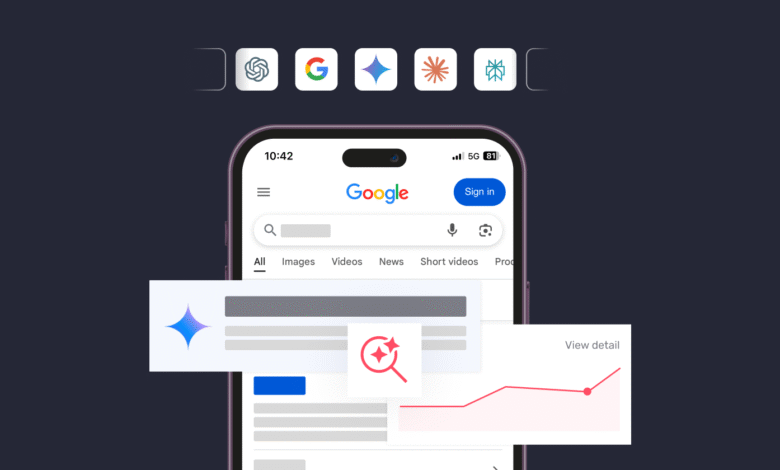Adapting to GEO: The New Era of Search Visibility for Marketers

▼ Summary
– SEO’s dominance in digital visibility is being challenged by the rise of generative AI tools like ChatGPT and Google AI Overviews, which provide synthesized answers instead of traditional link lists.
– A new discipline called Generative Engine Optimization (GEO) is needed to ensure content is selected and cited by large language models (LLMs) and answer engines.
– GEO differs from traditional SEO by focusing on how LLMs synthesize content from pre-ingested datasets rather than how search engines crawl and rank webpages.
– Effective GEO requires content that is well-structured, trustworthy, and semantically rich to align with how LLMs select and reuse information.
– Adopting GEO is essential for future visibility, as AI-generated responses are becoming default in search, and ignoring it risks brand invisibility in the new answer layer.
For thirty years, the playbook for online prominence was straightforward: master search engine optimization. Keywords, backlinks, and technical optimization were the undisputed drivers that pushed a brand to the top of search results. Today, that foundational approach is undergoing a profound transformation. The rapid adoption of generative AI tools, from Google’s AI Overviews to platforms like ChatGPT and Perplexity, means users are increasingly presented with synthesized, conversational answers instead of a simple list of links. This evolution signals that merely ranking on a search engine results page is no longer the ultimate goal. To maintain visibility, marketers must now embrace a complementary discipline known as Generative Engine Optimization (GEO).
Generative Search Optimization, or GEO, focuses on a new objective: ensuring your content is selected, understood, and cited by large language models (LLMs) and generative answer engines. The core difference from traditional SEO is significant. While classic search engines use bots to crawl and index webpages for ranking, LLMs operate differently. They synthesize information from massive, pre-ingested datasets, which are vast collections of content pulled from across the web, including websites, reviews, directories, and forums. These models don’t index pages for a list; they use the information as conversational padding to construct direct answers. This shift means your digital presence now hinges on more than just keyword placement.
To earn a spot in AI Overviews and other generative responses, your content must meet specific criteria. It needs to be present within trusted sources like your official site, profiles, and product pages. More importantly, it must be structured with exceptional clarity and semantic depth, while also being perceived as highly credible and consistent wherever it appears online. Essentially, GEO aims to make your brand a source that these intelligent systems trust enough to quote directly.
Optimizing for LLMs requires a strategic alignment with how these systems evaluate and reuse information. Our analysis points to three fundamental principles that characterize GEO-friendly content. First, provide structure and clarity. Generative models favor content that is well-organized with clear headings, bullet points, and summaries, making it easy for them to extract and repurpose information. Second, include trust and reliability signals. Factual accuracy, consistency across platforms, and transparency are heavily weighted. Showcasing expertise through author bylines, citing data, and providing real-world examples builds the credibility LLMs look for. Finally, prioritize contextual and semantic depth. As search queries become more conversational, content enriched with synonyms, related terms, and comprehensive coverage of a topic performs better than keyword-centric material.
Implementing GEO involves practical adjustments to your content creation process. Here are three critical tips. First, be comprehensive and intent-driven. LLMs favor complete answers, so cover not only the primary topic but also anticipate and answer related questions a user might have. Second, showcase E-E-A-T signals. Demonstrate Experience, Expertise, Authoritativeness, and Trustworthiness at every opportunity to make your content feel safe for an AI to reuse. Third, optimize format for both machine and human readability. Utilize formats like FAQs, how-to guides, and lists, and don’t forget technical elements like alt text for images and structured data, which aid in discoverability.
The necessity of GEO is underscored by current trends. A significant portion of problem-solving searches now trigger AI-generated responses, and features like AI Overviews are appearing in over ten percent of U.S. Google queries. The risk of ignoring this shift isn’t just lower traffic; it’s outright invisibility in the new answer layer where consumer decisions are formed. Marketers who adopt GEO can defend their brand’s presence where attention is consolidating, future-proof their SEO strategies, and maximize ROI by creating content that satisfies both human users and machine logic. This isn’t a passing trend but a structural shift in digital visibility.
GEO represents a powerful new competitive advantage. For marketing leaders, the opportunity lies in adapting faster than the competition. This means auditing existing content for GEO readiness, enhancing it with greater clarity and trust signals, and actively monitoring its presence within generative engines. The organizations that invest in GEO today are positioned to shape the answers of tomorrow.
(Source: Search Engine Journal)





